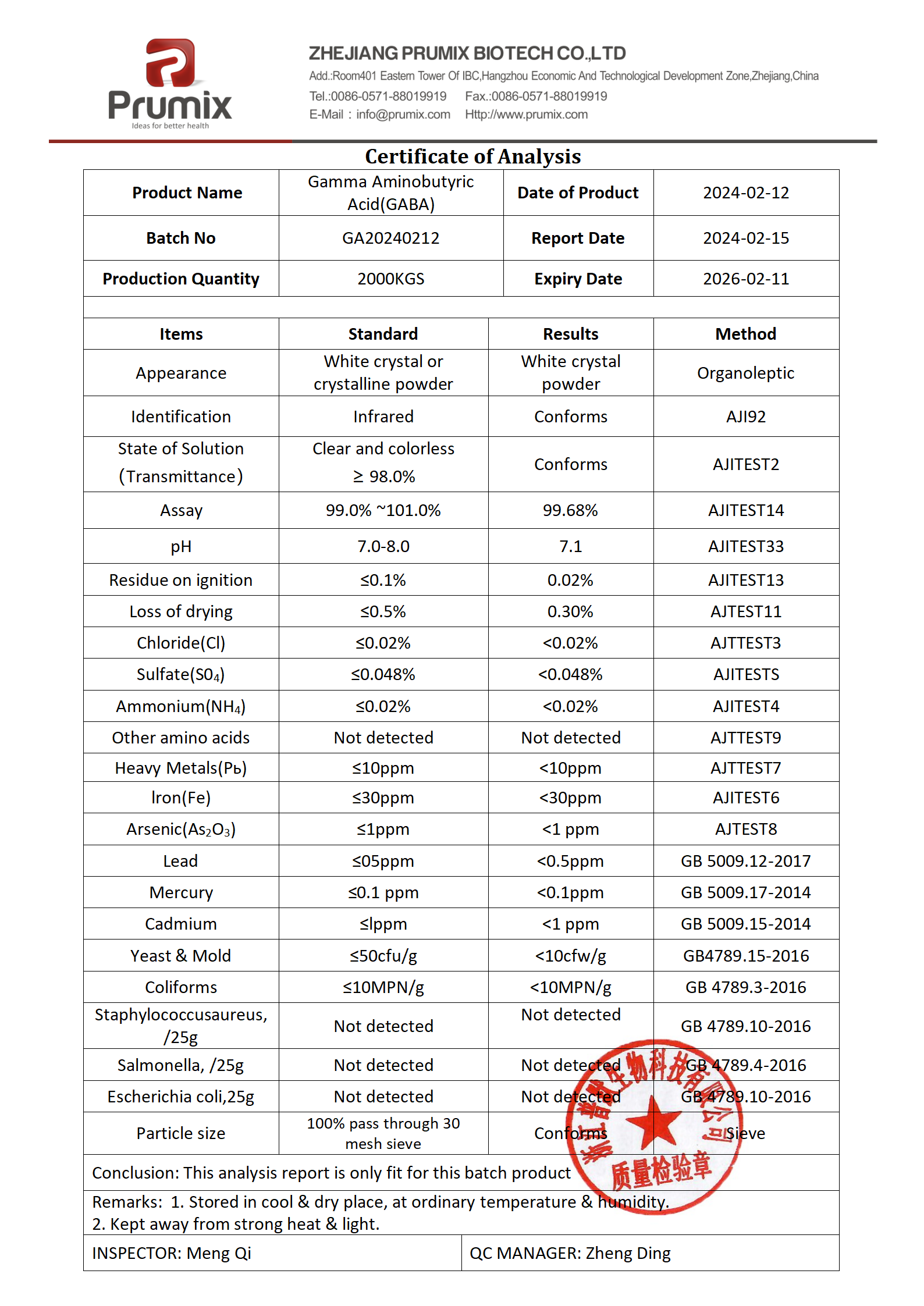What is Gamma Aminobutyric Acid/╬│-Aminobutyric Acid?
GABA: Also known as ╬│-aminobutyric acid, it exists in the animal brain and is the main inhibitory transmitter of nerves.
It is an amino acid widely distributed in nature, such as tomatoes, tangerines, grapes, potatoes, eggplants, pumpkins and cabbage.
GABA is also found in many fermented or sprouted foods and cereals, such as kimchi, pickles, miso, sprouted rice, etc.
GABA Production:
Product Name: ╬│-aminobutyric acid
CAS No.: 56-12-2
Molecular Formula: C4H9NO2
Molecular Weight: 103.12
EINECS No.: 200-258-6
China Manufacturer: Zhejiang Prumix Biotech CO., Ltd.
GABA Chemical Properties:
White flake or needle-shaped crystals; slightly odorous, deliquescent; easily soluble in water, slightly soluble in hot ethanol,
insoluble in cold ethanol, ether and benzene; decomposition point is 202Ōäā.
GABA Regulations:
In 2001, the Ministry of Health, Labor and Welfare of Japan officially classified GABA as food grade;
In 2007, JECFA (Joint Expert Committee on Food Additives) considered GABA to be a substance that does not require safety concerns.
In 2008, it passed the review and approval of the US FDA (GRN000257), confirming that GABA is a GRAS substance,
and its metabolites in the human body are non-toxic and harmless substances that can be quickly excreted from the body;
On September 27, 2009, the Ministry of Health of China listed GABA as a new food ingredient.
GABA Advantages:
Natural lactic acid bacteria fermentation;
Products have been identified by authoritative institutions for strain identification and naturalness;
GABA has the largest production scale in China, 50 tons/year;
CNAS certified, providing professional and rigorous testing services;
Drafting of GABA industry standard OB/T 4587-2013.
GABA Mechanism of Action:
GABA is a non-protein amino acid and an inhibitory neurotransmitter;
GABA is mainly absorbed in the small intestine, and is absorbed and transported through two pathways: active absorption
that requires sodium and energy, and the ╬│-glutamyl cycle;
GABA binds to its receptor, causing more chloride ions to flow from outside the cell into the cell,
thereby reducing the excitability of neurons;
GABA deficiency can lead to excessive tension or excitement, which in turn causes restlessness, anxiety, depression, and fatigue.
GABA Effects:
Relieve stress: 28-100mg/d
Improve sleep: 100-200mg/d
Lower blood pressure: 10-80mg/d
Applicable Food Categories And Scope of Use:
Beverages, cocoa products, chocolate and chocolate products, candy, baked goods, puffed foods, but excluding infant food.





